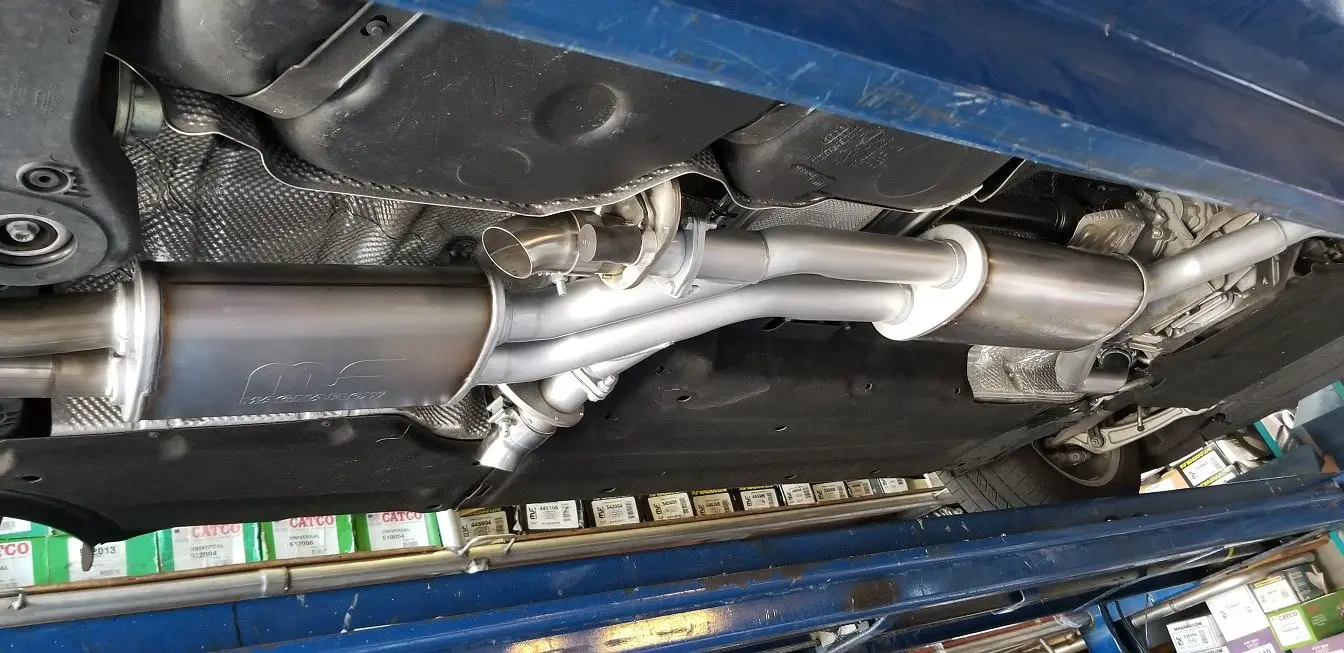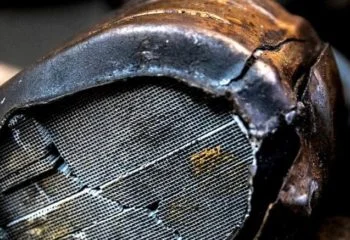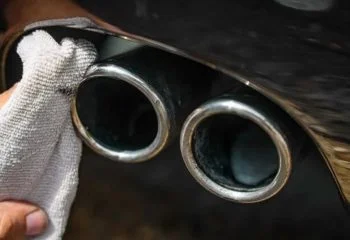When most people think of car exhaust systems, the first thing that comes to mind is the muffler.
But what many don’t know is that there’s another component in your car’s exhaust system called a resonator. So what is resonator on exhaust?
The main purpose of the resonator is to cancel out engine noise. It’s typically located between the muffler and the catalytic converter.
If you’re looking for a way to make your car’s exhaust system louder, you might be wondering if resonator delete is a good idea.
There are a few things you should know about resonator delete before you make a decision.
In this blog post, we will go through what is a resonator and what it does, what is resonator delete and how much does it cost to have one deleted? Keep reading to find out.
What's in this post?
What is resonator on exhaust and what does it do?

An exhaust resonator is a device that is installed in the exhaust system of a vehicle.
The exhaust resonator is located in the exhaust system, downstream of the catalytic converter and before the muffler. Its purpose is to reduce noise from the exhaust by creating a tuned muffler.
The exhaust resonator works by canceling out certain frequencies of sound that are produced by the engine.
It does this by having a chamber that is the same size as the wavelength of the engine noise. When the engine noise reaches the chamber, it reflects off the walls and cancels itself out.
As a result, the noise that reaches the car’s interior is significantly reduced.
The resonator is an important part of the exhaust system, and it helps to make sure that your car runs quietly and smoothly.
Useful read: What is EGR delete?
Types of Resonator
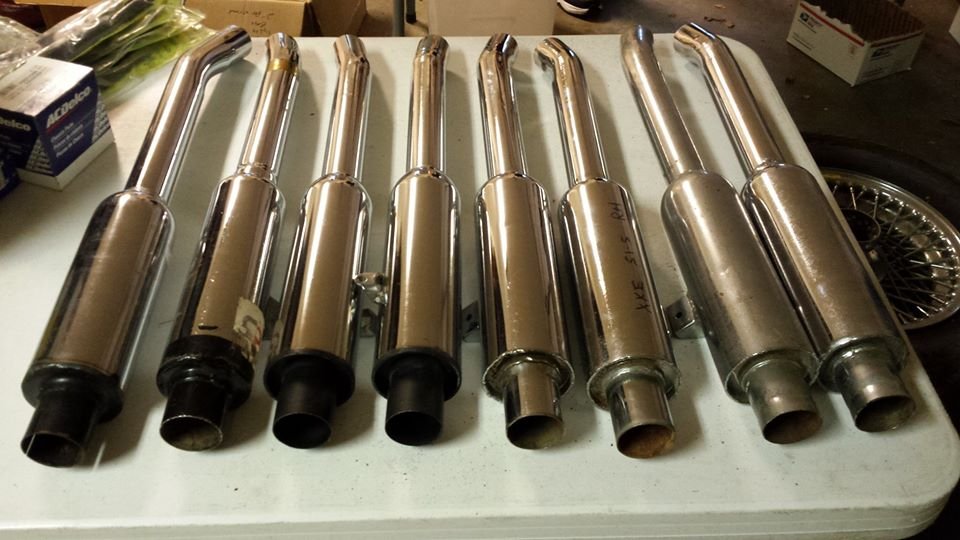
There are several different types of exhaust resonators on the market, each with its own advantages.
Chamber/Helmholtz resonator
The most common type of resonator is the chamber resonator, which uses a series of baffles to redirect exhaust gases and сreate cancellation.
The chamber exhaust resonator consists of a chamber with an inlet and outlet, and a resonator located within the chamber.
The chamber is usually made of steel or cast iron, and the resonator is typically made of glass wool or ceramic fibers.
When the engine is operating, the exhaust gas flows through the chamber and into the resonator, where it is absorbed and dissipated by the resonator material.
The chamber exhaust resonator is an effective way to reduce engine noise, and it is often used in applications where noise reduction is critical, such as in aircraft engines.
This type of resonator is relatively inexpensive and easy to install, but it is less effective at reducing noise than other types.
Expansion chamber exhaust resonator
The expansion chamber exhaust resonators come in the form of simple tubes with varying diameters, with one section having a smaller diameter than the rest.
When sound waves enter the tube, they bounce off of the walls and cancel each other out, resulting in a reduction of overall noise.
This way, your vehicle will produce exhaust with a lower tone, making it more pleasant for both you and those around you.
In addition to being more aesthetically pleasing, this can also help to extend the life of your vehicle’s exhaust system by reducing wear and tear.
Dissipative resonators
The dissipative exhaust resonator is typically a cylindrical or rectangular chamber with an inlet and outlet.
The major advantage of using a dissipative exhaust resonator is that it does not require any maintenance and can be used for a long time without any deterioration in performance.
In addition, dissipative exhaust resonators are relatively inexpensive and can be easily installed in most exhaust systems. As a result, they are an ideal solution for attenuating noise from exhaust systems.
What is a resonator delete and what it does?
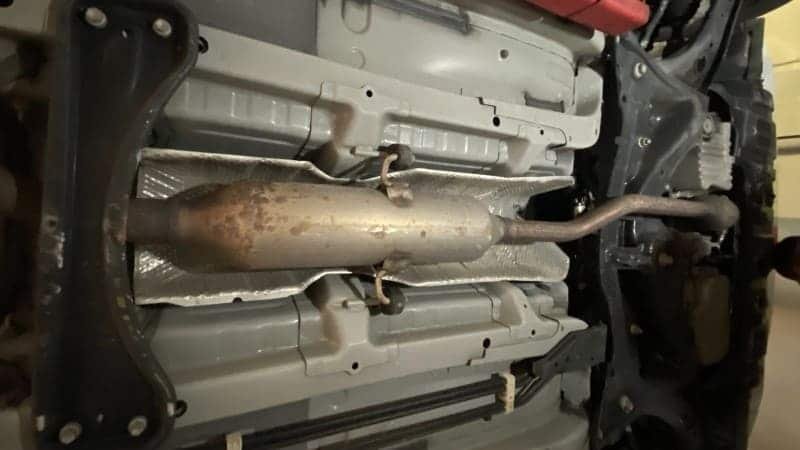
A resonator delete is a modification made to the exhaust system of a vehicle. It involves removing the resonator, which is a chamber designed to cancel out certain frequencies of sound.
Resonator deletes are often performed in order to improve the sound of the exhaust note, and they can also provide a small performance boost by reducing back pressure.
In some cases, a resonator delete may also be used to repair an exhaust system that has been damaged. When performed properly, a resonator delete can be an effective way to improve the sound and performance of your vehicle.
However, it is important to note that resonator deletes are not legal in all jurisdictions, so be sure to check local laws before having one installed.
Pros and cons of deleting the resonator
There are a few pros and cons to consider before deleting the resonator from your vehicle’s exhaust system.
Some of the benefits of a resonator delete include:
Improved sound: One of the most popular reasons for performing a resonator delete is to improve the sound of the exhaust note. Without the resonator, the exhaust will be louder and have a more aggressive sound.
Increased performance: Another benefit of deleting the resonator is that it can help to increase performance. By reducing back pressure, the engine will be able to breathe easier and make more power.
Weight savings: Removing the resonator will result in weight savings. This can be beneficial for those who want to reduce their vehicle’s curb weight and are looking at removing anything that might come off as unnecessary, like this component!
There are also a few drawbacks to consider before deleting the resonator, such as:
Louder noise: One of the biggest downsides of deleting the resonator is that it will make the exhaust noise much louder. This can be unpleasant for some people, and it may also draw the attention of the police.
Reduced fuel economy: Another potential downside of a resonator delete is that it can lead to reduced fuel economy. This is due to the fact that the engine will have to work harder to move the exhaust gases through the system.
Possible legal issues: In some jurisdictions, deleting the resonator from your vehicle’s exhaust system may be illegal. Be sure to check local laws before having a resonator delete performed.
How to delete an exhaust resonator?
If you’ve decided that you want to delete the resonator from your vehicle’s exhaust system, here is a step-by-step guide on how to do so:
- First, locate the exhaust resonator. It is usually located near the front of the vehicle, just before the catalytic converter.
- Once you have located it, disconnect the exhaust pipe from the resonator. You may need a wrench to do this.
- Next, remove the bolts that secure the resonator to the vehicle’s frame. Again, you may need a wrench for this.
- With the bolts removed, you should now be able to pull the resonator away from the vehicle.
- Finally, reinstall the exhaust pipe and secure it in place. Your vehicle is now ready to run without an exhaust resonator!
Once everything is back in place, your car should have an improved sound and increased performance.
How to install a new resonator if you want to replace the old one?
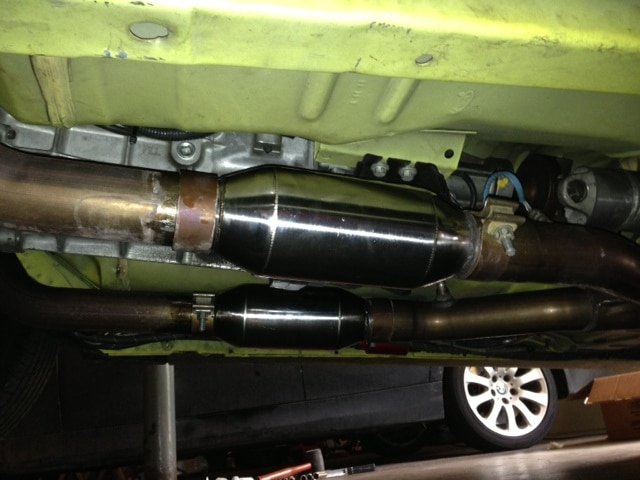
If you’ve decided that you want to install a new resonator, there are a few things you’ll need to do in order to ensure that the job is done properly.
First, you’ll need to purchase a new resonator. Be sure to get one that is designed for your make and model of vehicle.
Next, you’ll need to remove the old resonator from the exhaust system. This can be done by unbolting it from the exhaust pipe and then removing it from the vehicle.
Once the old resonator has been removed, you can install the new one in its place. Be sure to bolt it securely into place so that it doesn’t come loose while you’re driving.
Finally, you’ll need to test the exhaust system to make sure that the new resonator is working properly. Start the engine and listen for any unusual noises. If everything sounds normal, then you’re good to go.
Useful read: What Is a Cat Back Exhaust System?
How much does a resonator delete cost
The cost of deleting the resonator will vary depending on a few factors, such as the make and model of your vehicle, where you have it done, and whether or not you do it yourself.
On average, you can expect to pay between $50 and $200 for a resonator delete. If you decide to do it yourself, you’ll just need to purchase a new resonator and some basic tools.
Overall, a resonator delete can be a great way to improve the sound and performance of your vehicle.
How to find resonator delete near me
There are a few places to look if you’re trying to find a resonator delete near you. Your best bet is probably to start with your local auto parts store.
They may not have exactly what you’re looking for in stock, but they should be able to order it for you.
Another option is to search online for retailers that specialize in aftermarket car parts. You might be able to find what you’re looking for at a lower price than you would at a brick-and-mortar store.
Finally, if you know of any local mechanics or body shops, they may also be able to help you out.
Catalytic converter vs resonator
The main difference between a catalytic converter and a resonator is that a catalytic converter converts harmful emissions into less harmful emissions while a resonator reduces noise.
Both are important parts of a car’s exhaust system. A catalytic converter is located between the engine and the muffler, while a resonator is located in the muffler.
Both help to reduce noise and emissions, but they do so in different ways.
A catalyst, generally platinum or palladium, is used in a catalytic converter to help convert harmful emissions into less harmful ones.
This is important because it helps to reduce the amount of pollution that a car produces. A resonator, on the other hand, does not contain a catalyst.
Instead, it uses muffling techniques to reduce noise. It works by absorbing sound waves and preventing them from bouncing around inside the muffler.
While both are important for reducing noise and emissions, each has its own advantages and disadvantages.
For example, catalytic converters are more effective at reducing emissions than resonators, but they are also more expensive.
On the other hand, resonators are less expensive than catalytic converters but they are not as effective at reducing emissions. Ultimately, it is up to
FAQs
Does a resonator delete void warranty?
No. A resonator delete will not void your warranty. The only way a delete could void your warranty is if it is done incorrectly and causes damage to your vehicle.
However, if done correctly, a delete will not void your warranty. In fact, many automakers are now offering deletes as factory options on new cars.
This shows that they are confident in the durability of their product and are willing to back it up with a warranty.
So, if you are considering a resonator delete, rest assured that it will not void your warranty.
Does removing the resonator increase horsepower?
Yes. Removing the resonator will increase horsepower because it reduces back pressure. Back pressure is the amount of pressure that is exerted on the engine by the exhaust system.
The more back pressure there is, the harder it is for the engine to push exhaust out of the car. This causes the engine to work harder, which reduces power and efficiency.
By removing the resonator, you are essentially reducing back pressure and making it easier for the engine to expel exhaust. This results in more power and better performance.
Resonator before or after muffler?
The resonator is located before the muffler in the exhaust system. The resonator’s main goal is to reduce noise.. It does this by absorbing sound waves and preventing them from bouncing around inside the muffler.
The muffler is located after the resonator in the exhaust system. The muffler’s main function is to reduce noise and emissions.
It does this by using baffles to dissipate sound waves and by using catalysts to convert harmful emissions into less harmful emissions.
So, while both resonator and the muffler serve important functions, they each have their own specific purpose in the exhaust system.
Can resonator delete pass inspection?
Yes. The resonator delete will pass inspection because it does not affect the emissions of the car. The only way a delete could fail inspection is if it is done incorrectly and causes damage to your vehicle.
However, if done correctly, a delete will not fail inspection. In fact, many automakers are now offering deletes as factory options on new cars.
This shows that they are confident in the durability of their product and are willing to back it up with a warranty.
Does a resonator stop backfire?
No. A resonator will not stop backfire. The only way to stop backfire is to correct the problem that is causing it.
There are many possible causes of backfire, such as a lean air/fuel mixture, incorrect timing, or a clogged exhaust system.
So, if you are experiencing backfire, you should have your car checked by a mechanic to diagnose and fix the problem.
Will resonator delete throw a code?
No. A resonator delete won’t throw a code. The only way a delete could throw a code is if it is done incorrectly and causes damage to your vehicle.
However, if done correctly, a delete will not throw a code. In fact, many automakers are now offering deletes as factory options on new cars.
This shows that they are confident in the durability of their product and are willing to back it up with a warranty.
So, if you are considering delete the resonator, rest assured that it will not throw a code.
Should you replace or repair a bad resonator?
In some cases, the damage may be minor and the resonator can be repaired. However, if the resonator is severely damaged, it will need to be replaced.
Replacing a resonator is a relatively straightforward process, but it will require some disassembly of the exhaust system.
Ultimately, whether you decide to replace or repair a damaged resonator will depend on the extent of the damage and your budget.
Does resonator delete fail MOT?
No. The resonator delete will not fail MOT because it does not affect the emissions of the car. The only way a delete could fail MOT is if it is done incorrectly and causes damage to your vehicle.
This shows that they are confident in the durability of their product and are willing to back it up with a warranty.
Does a resonator delete affect mpg?
Yes. The resonator delete will affect mpg because it changes the airflow through the exhaust system. By removing the resonator, you are essentially reducing back pressure and making it easier for the engine to expel exhaust.
When the resonator is removed, power increase and better performance are obtained, but fuel efficiency declines. So, if you want to get the most mileage out of your automobile, keep the resonator in place.
Will the resonator delete hurt my car?
Yes. It may reduce fuel efficiency. The resonator helps to reduce back pressure in the exhaust system, and without it, the engine has to work harder to push exhaust gases out. As a result, the engine will use more fuel and produce more emissions.
Should I delete resonator or muffler?
The answer to this question depends on your goals for the car. If you are looking for improve power and performance, then you should delete the resonator.
If you are looking for a quieter exhaust, then you should delete the muffler. Ultimately, the decision of which to delete is up to you.
Does resonator delete make my car pop?
No. The resonator delete will not make your car pop. Popping is usually caused by an incorrect air/fuel mixture or by a misfire in the engine.
The resonator delete does not affect the air/fuel mixture, so it will not cause your car to pop. Additionally, the delete does not affect engine timing, so it will not cause a misfire.
Ultimately, the only way resonator delete could cause your car to pop is if it is done incorrectly and damages your exhaust system.
If you are concerned about damaging your car, then you should have the delete done by a professional mechanic.
Is a resonator delete a straight pipe?
No. The resonator delete is not a straight pipe. A straight pipe is simply a section of exhaust pipe that is not bent or curved in any way.
The resonator delete simply removes the resonator from the exhaust, but it does not replace it with a straight pipe.
Instead, the delete simply connects the exhaust pipes before and after the resonator. This maintains the proper flow of exhaust through the system and prevents damage to your car.
Can you put resonator back on after delete?
Yes. You can put a resonator back on after deleting it, but you will need to have a new one welded in place.
The resonator delete involves cutting the exhaust pipe and removing the resonator. This leaves two open ends that need to be connected.
If you want to put a resonator back on, then you will need to have a new one welded in place. This is not a difficult task, but it will require the services of a professional welder.
How long does resonator delete take?
The resonator delete will take about an hour to complete.
However, this time can vary depending on the make and your car model.
Some cars are easier to work on than others, so the time it takes to delete the resonator will vary.
Additionally, the amount of experience you have with working on cars will also affect the time it takes to delete the resonator.
If you are experienced, then you may be able to complete the job in less than an hour. However, if you are inexperienced, then it may take longer.
Does deleting resonator causes drones?
Yes. The resonator delete will cause drone because it changes the flow of exhaust through the system.
Without the resonator, exhaust gases are free to flow through the system more freely. This results in a deeper and more aggressive sound, but it also causes drone.
Drone is a low frequency sound that can be quite annoying on long trips. If you are looking to avoid drone, then you should not delete the resonator.
Does a resonator have Honeycomb?
No. A resonator does not have a honeycomb.
The honeycomb is a type of filter that is used in the muffler to help reduce noise.
The resonator does not have a muffler, so it does not need a honeycomb.
Will adding resonators quiet an exhaust?
No. Adding resonators will not quiet an exhaust.
Resonators are designed to cancel out certain frequencies of sound. However, they cannot cancel out all frequencies of sound.
As a result, adding resonators to your exhaust will not make it any quieter. In fact, it may actually make the noise louder because the added resonators will amplify certain frequencies of sound.
If you are looking to quiet your exhaust, then you should consider adding a muffler or silencer. These devices are designed to reduce the overall noise of your exhaust system.
Does resonator position affect sound?
No. The position of the resonator does not affect sound.
Resonators are designed to cancel out certain frequencies of sound. They do this by reflecting sound waves in a specific way.
The position of the resonator does not affect how it reflects sound waves. As a result, the position of the resonator will not affect the sound of your exhaust system.
Ultimately, the only thing that will affect the sound of your exhaust system is the number and type of resonators you have installed.
If you want to change the sound of your exhaust, then you should add or remove resonators until you get the desired effect.
What’s the difference between glasspack and resonator?
A glasspack is a type of muffler that uses fiberglass insulation to absorb sound. A resonator is a device that reflects sound waves in a specific way to cancel out certain frequencies of sound.
Glasspacks are typically less expensive than resonators, but they are also not as effective at reducing noise.
If you are looking for the best possible noise reduction, then you should install a resonator. However, if you are on a budget, then a glasspack may be a good option.
Is the resonator before the catalytic converter?
The resonator is typically located before the catalytic converter.
The resonator is a device that reflects sound waves in a specific way to cancel out certain frequencies of sound.
The catalytic converter is a device that cleans exhaust gases before they are released into the atmosphere.
The resonator is typically located before the catalytic converter because it helps to reduce noise levels. By cancelling out certain frequencies of sound, the resonator makes the exhaust system quieter.
Additionally, by reducing noise levels, the resonator also helps to protect the catalytic converter from damage.
Do all cars have a resonator?
No. Not all cars have a resonator.
Resonators are typically installed in cars that have a lot of engine noise. However, some cars do not have a lot of engine noise and do not need a resonator.
Additionally, some car owners choose to delete the resonator from their exhaust system to make it louder. If you delete the resonator, then your car will not have one.
What can affect the function of an exhaust resonator?
There are several things that can affect the function of an exhaust resonator.
The first is the number of cylinders your engine has. The more cylinders your engine has, the more noise it will make. As a result, cars with more cylinders typically need a resonator to help reduce noise levels.
Another thing that can affect the function of an exhaust resonator is the type of engine you have. Diesel engines tend to be very noisy, so they often need a resonator to help reduce noise levels.
Finally, the position of the resonator can also affect its performance. Resonators are typically located before the catalytic converter. However, some car owners choose to delete the resonator or move it to a different location in the exhaust system.
If you delete the resonator or move it to a different location, then it will not be able to effectively reduce noise levels.
When did they start putting resonators on cars?
They started putting resonators on cars in the 1970s.
Resonators were designed to cancel out certain frequencies of sound. They are typically installed in cars that have a lot of engine noise.
By cancelling out certain frequencies of sound, the resonator makes the exhaust system quieter. Additionally, by reducing noise levels, the resonator also helps to protect the catalytic converter from damage.
What are the resonators made out of?
They are typically made out of stainless steel.
Resonators are designed to reflect sound waves in a specific way to cancel out certain frequencies of sound. As a result, they are typically made out of materials that can reflect sound waves well.
Stainless steel is a common material used for resonators because it reflects sound waves well and is also resistant to corrosion.
How long does an exhaust resonator last?
An exhaust resonator typically lasts for the life of the car.
Resonators are designed to reflect sound waves in a specific way to cancel out certain frequencies of sound. As a result, they do not wear out over time.
Additionally, stainless steel is a common material used for resonators because it is resistant to corrosion. This means that the resonator will not rust over time.
Ultimately, an exhaust resonator should last for the life of the car. However, if it is damaged, then it will need to be replaced.
What are some signs that an exhaust resonator needs to be replaced?
Some signs that an exhaust resonator needs to be replaced include:
- A decrease in engine noise
- An increase in engine noise
- A rattling noise from the exhaust system
If you notice any of these signs, then it is time to replace your exhaust resonator.
What is the cost to replace an exhaust resonator?
The cost to replace an exhaust resonator can vary depending on a few factors. Some of these factors include:
- The make and model of your car
- The location of the resonator
- The severity of the damage
- Whether or not you need to replace the entire exhaust system
Ultimately, the best way to get an accurate estimate for the replacement cost is to take your car to a mechanic.
Do I need a special tool to replace an exhaust resonator?
No. You do not need a special tool to replace an exhaust resonator.
Replacing an exhaust resonator is a relatively simple process. However, it is important to note that you will need to have access to the underside of your car.
If you do not feel comfortable replacing the resonator yourself, then you can always take your car to a mechanic.
Final thoughts
Exhaust resonators are devices used to remove certain frequencies from the exhaust of an engine. By doing so, they can improve performance and exhaust sound.
Resonator delete kits are available for a variety of vehicles, and while they may be more expensive than stock resonators, they offer a number of benefits.
However, they are illegal in all states and provinces, so it’s important to check your local laws before you make any modifications to your vehicle.
If you’re looking for a way to improve the performance of your car and make it sound better, resonator delete may be a good option for you. Just be sure to do your research and consult with a professional before you make any changes to your car.

